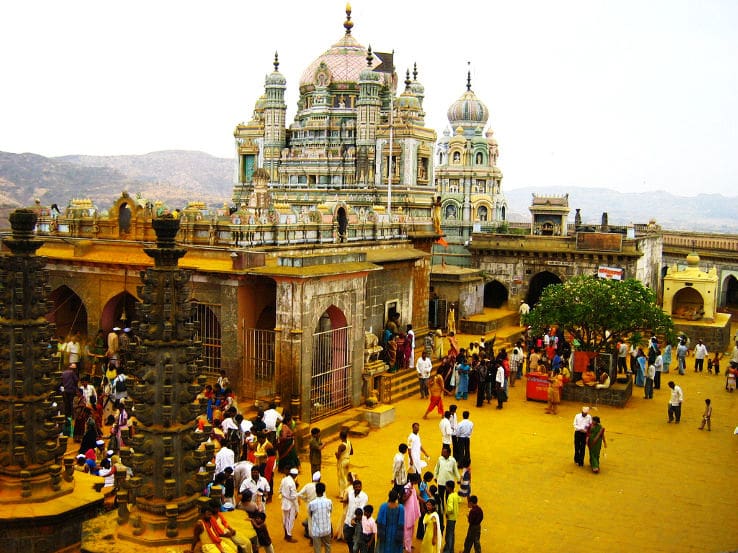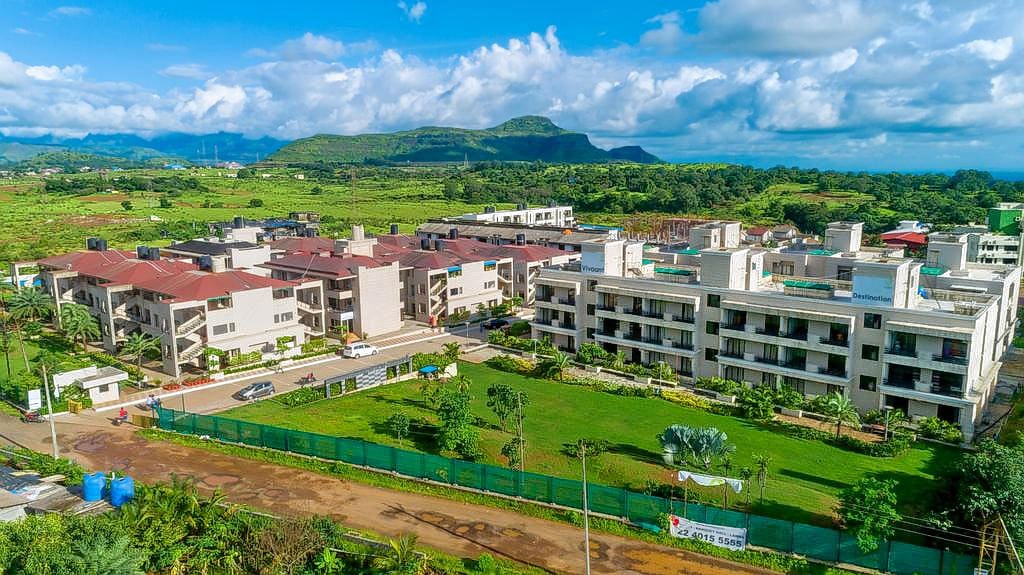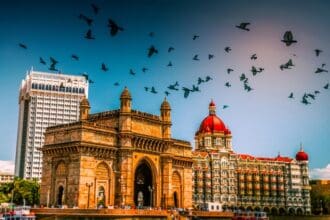Shirdi, a small town in the state of Maharashtra, India, is synonymous with spirituality and devotion. It is the final resting place of Sai Baba, one of the most revered saints in India, whose teachings of love, faith, and unity continue to inspire millions worldwide. Beyond its spiritual significance, Shirdi offers a blend of history, culture, and natural beauty that makes it a must-visit destination for travelers. In this article, we will explore the top 5 places to visit in Shirdi , ensuring your trip is both enriching and memorable.
1. Shri Sai Baba Temple: The Heart of Shirdi
Why Visit Shri Sai Baba Temple?
The Shri Sai Baba Temple is the epicenter of Shirdi’s spiritual aura and attracts millions of devotees from across the globe every year. Dedicated to Sai Baba, the temple is a symbol of faith, humility, and universal love. The serene atmosphere, coupled with the divine energy of the site, makes it an unforgettable experience for visitors.
The Significance of the Temple
Sai Baba spent the last years of his life in Shirdi, where he preached the importance of selfless service, devotion, and compassion. After his passing in 1918, his samadhi (final resting place) became the focal point of worship. Today, the temple stands as a testament to his enduring legacy and continues to be a beacon of hope and solace for millions.
Exploring the Temple Complex
- Samadhi Mandir: The main shrine houses Sai Baba’s marble statue, adorned with flowers, garlands, and gold ornaments. Devotees queue for hours to catch a glimpse of the deity.
- Chavadi: This nearby structure served as Sai Baba’s residence during the rainy season. It is open to visitors and holds immense historical importance.
- Dwarakamai: A small mosque within the temple complex, Dwarakamai was Sai Baba’s primary place of worship. It symbolizes his message of religious harmony, as he welcomed people of all faiths to pray here.
Activities Around the Temple
- Aarti Ceremonies: Attend the morning and evening aartis, which are deeply spiritual and visually stunning.
- Prasad Distribution: Partake in the distribution of prasad (blessed food), a tradition that reflects Sai Baba’s emphasis on equality and sharing.
- Meditation: Spend quiet moments in the temple’s meditation halls to connect with your inner self.
“The Shri Sai Baba Temple is not just a place of worship; it’s a sanctuary where faith transcends boundaries.”
Visitor Tips
- Arrive early to avoid long queues, especially during festivals like Guru Purnima and Diwali.
- Dress modestly and remove footwear before entering the temple premises.
- Photography is restricted inside the main shrine.
Detailed Exploration of the Temple
The Shri Sai Baba Temple is a marvel of architecture, blending traditional Indian design with modern amenities. The temple’s white marble facade gleams under the sun, while intricate carvings and motifs adorn its walls. Inside, the air is filled with the fragrance of incense and the sound of devotional hymns, creating an atmosphere of profound peace.
One of the highlights of the temple is the Lendi Baug , a garden where Sai Baba used to meditate and spend time in solitude. Today, it serves as a peaceful retreat for visitors seeking quiet reflection. Another notable feature is the Nanda Deep , an eternal flame lit by Sai Baba himself, which continues to burn day and night as a symbol of eternal faith.
Cultural Insights
The temple complex also hosts cultural programs, including bhajan recitals and discourses on Sai Baba’s teachings. These events provide deeper insights into his philosophy of “Sabka Malik Ek” (One God for All) and inspire visitors to lead lives of kindness and humility.
2. Dwarkamai Mosque: A Symbol of Religious Harmony
What Makes Dwarkamai Special?
The Dwarkamai Mosque is one of the most sacred sites in Shirdi and holds immense spiritual significance. Despite being a mosque, it welcomes people of all religions, embodying Sai Baba’s message of unity and inclusivity.
The Historical Context
During Sai Baba’s lifetime, Dwarkamai was the center of his spiritual activities. He would sit here for hours, offering guidance to his followers and performing miracles. The mosque’s simplicity reflects Sai Baba’s humble lifestyle and his disdain for materialism.
Activities at Dwarkamai
- Prayer Sessions: Join devotees in prayer, regardless of your religious background.
- Photography: Capture the serene ambiance of the mosque, with its simple yet profound architecture.
- Reflection: Sit quietly and absorb the spiritual energy of the place.
“Dwarkamai is a living example of Sai Baba’s vision of a world united by love and faith.”
Practical Information
- Respect the sanctity of the site by maintaining silence and avoiding loud conversations.
- Remove footwear before entering the mosque.
- Plan your visit during non-peak hours for a more intimate experience.
Detailed Exploration of Dwarkamai
Dwarkamai is a modest structure, but its significance is immeasurable. The interior is adorned with oil lamps, rudraksha beads, and images of Hindu deities alongside Islamic calligraphy, symbolizing the confluence of faiths. Visitors often light incense sticks or offer flowers as tokens of devotion.
One of the most cherished traditions at Dwarkamai is the Udi Distribution . Udi, a sacred ash blessed by Sai Baba, is believed to have healing properties. Devotees collect udi from the mosque and carry it home as a memento of their visit.
Spiritual Lessons
Dwarkamai teaches the importance of coexistence and mutual respect. Sai Baba’s practice of welcoming Hindus and Muslims alike underscores the universality of his teachings and serves as a reminder of the shared humanity that binds us all.
3. Chavadi: A Glimpse into Sai Baba’s Life
Why Visit Chavadi?
The Chavadi is a small but historically significant building located near the Shri Sai Baba Temple. It served as Sai Baba’s residence during the monsoon months and offers a personal connection to his daily life.
The Role of Chavadi
Sai Baba moved to Chavadi during the rainy season to avoid flooding in the mosque. Here, he continued his spiritual practices and interacted with devotees. The simplicity of the structure reflects his ascetic lifestyle and detachment from worldly comforts.
Exploring Chavadi
- Architectural Simplicity: Admire the unpretentious design of the building, which mirrors Sai Baba’s humility.
- Historical Artifacts: View relics such as Sai Baba’s bed, utensils, and clothing, preserved for posterity.
- Photography: Capture the rustic charm of Chavadi and its surroundings.
“Chavadi is a window into Sai Baba’s life, where simplicity meets divinity.”
Travel Tips
- Visit early in the morning or late in the evening to avoid crowds.
- Respect the privacy of other visitors while taking photographs.
- Carry water and snacks, as there are limited refreshment options nearby.
Detailed Exploration of Chavadi
Chavadi is a small, single-story building with mud walls and a thatched roof. Inside, you’ll find replicas of Sai Baba’s belongings, including his wooden sandals, staff, and blanket. These items evoke a sense of nostalgia and remind visitors of his austere yet impactful life.
Every Thursday evening, a procession called the Palkhi Ceremony takes place, where Sai Baba’s idol is carried from the temple to Chavadi. Thousands of devotees participate in this event, singing bhajans and chanting prayers along the way. It’s a vibrant celebration of faith and devotion that shouldn’t be missed.
Cultural Insights
The Palkhi Ceremony is steeped in tradition and showcases the deep bond between Sai Baba and his followers. It also highlights the communal spirit of Shirdi, as locals and tourists come together to honor the saint’s memory.
4. Sai Heritage Village: A Celebration of Culture
What Sets Sai Heritage Village Apart?
The Sai Heritage Village is a unique attraction that combines entertainment, education, and spirituality. Located near the Shri Sai Baba Temple, it offers a glimpse into the cultural and historical aspects of Sai Baba’s life and teachings.
The Concept Behind the Village
The village is designed as a thematic park, featuring replicas of significant landmarks associated with Sai Baba, such as his birthplace in Pathri and the Khandoba Temple in Shirdi. Interactive exhibits and multimedia presentations provide a comprehensive understanding of his life and philosophy.
Things to Do at Sai Heritage Village
- Guided Tours: Explore the village with a guide who shares fascinating stories about Sai Baba’s life.
- Cultural Programs: Watch performances of traditional music and dance inspired by Sai Baba’s teachings.
- Shopping: Browse stalls selling souvenirs, books, and artifacts related to Sai Baba.
“Sai Heritage Village is a tribute to Sai Baba’s legacy, where history comes alive through art and storytelling.”
Visitor Guidelines
- Book tickets in advance to avoid long waits, especially during peak tourist seasons.
- Follow the rules set by the management to ensure a smooth experience.
- Carry cash for purchasing souvenirs and refreshments.
Detailed Exploration of Sai Heritage Village
The village spans several acres and is divided into themed zones, each representing a different aspect of Sai Baba’s journey. For instance, the Pathri Zone recreates the rural setting of Sai Baba’s childhood, complete with traditional huts and farming tools. Similarly, the Shirdi Zone features lifelike statues of Sai Baba performing everyday tasks, such as cooking and meditating.
One of the highlights of the village is the Light and Sound Show , which narrates the story of Sai Baba’s life using state-of-the-art technology. The show is both educational and entertaining, making it suitable for visitors of all ages.
Adventure Opportunities
For families traveling with children, Sai Heritage Village offers fun activities like pottery workshops, painting sessions, and puppet shows. These activities provide a hands-on way to engage with the local culture and create lasting memories.
5. Maruthi Mandir: A Tribute to Hanuman
Why Visit Maruthi Mandir?
The Maruthi Mandir , located near the Shri Sai Baba Temple, is dedicated to Lord Hanuman, a symbol of strength, loyalty, and devotion. It is a popular spot for devotees seeking blessings and protection.
The Mythological Connection
According to legend, Sai Baba had a deep reverence for Lord Hanuman and often invoked his name during prayers. The mandir serves as a reminder of this divine connection and attracts thousands of visitors annually.
Activities at Maruthi Mandir
- Prayer Sessions: Participate in the morning and evening aartis dedicated to Lord Hanuman.
- Photography: Capture the vibrant colors and intricate carvings of the temple.
- Reflection: Meditate in the peaceful surroundings to seek inner strength and courage.
“Maruthi Mandir is a beacon of hope, where faith meets resilience.”
Practical Information
- Dress modestly and remove footwear before entering the temple premises.
- Avoid visiting during peak hours if you prefer a quieter experience.
- Carry water and snacks, as there are limited facilities nearby.
Detailed Exploration of Maruthi Mandir
The Maruthi Mandir is a colorful and vibrant structure, adorned with paintings and sculptures depicting scenes from the Ramayana. The central idol of Lord Hanuman is made of black stone and is draped in orange cloth, symbolizing his fiery nature and unwavering devotion.
One of the unique rituals at the mandir is the Bajrang Baan Path , a powerful prayer recited to invoke Lord Hanuman’s blessings. Many devotees believe that chanting this mantra helps overcome obstacles and brings peace of mind.
Cultural Insights
The mandir also hosts annual festivals like Hanuman Jayanti, which celebrate the birth of Lord Hanuman. During these occasions, the temple is decorated with lights and flowers, and special pujas are performed to honor the deity.
Conclusion: Why Shirdi Should Be Your Next Travel Destination
Shirdi is a destination that transcends the boundaries of religion and culture, offering a universal message of love, faith, and unity. Whether you’re seeking spiritual enlightenment at the Shri Sai Baba Temple, exploring the simplicity of Dwarkamai, or immersing yourself in the vibrant atmosphere of Sai Heritage Village, your journey through Shirdi will leave an indelible mark on your heart.
“In Shirdi, every corner resonates with divinity, and every moment feels like a blessing.”
FAQs About Visiting Shirdi
- What is the best time to visit Shirdi?
The best time to visit Shirdi is between October and March when the weather is pleasant. - How do I reach Shirdi?
Shirdi is well-connected by road, rail, and air. The nearest airport is in Aurangabad, approximately 120 kilometers away. - Are there any accommodation options in Shirdi?
Yes, Shirdi offers a range of hotels, guesthouses, and ashrams catering to different budgets. - Is Shirdi suitable for solo travelers?
Absolutely! Shirdi is safe and welcoming for solo travelers, especially those interested in spirituality. - What should I pack for a trip to Shirdi?
Pack comfortable clothing, sturdy shoes for walking, sunscreen, and a camera to capture memories. - Can I visit all these places in one day?
Yes, all the mentioned sites can be explored in a single day, as they are located close to each other. - Are these places family-friendly?
Yes, all the mentioned destinations are suitable for families with children. - Do I need permits to visit these attractions?
No permits are required for visiting these places, but it’s advisable to check ahead for any updates. - What local delicacies should I try in Shirdi?
Don’t miss out on Maharashtrian dishes like puran poli , misal pav , and shrikhand . - Are there any shopping options in Shirdi?
Local markets sell handmade crafts, religious artifacts, and souvenirs, making great keepsakes.
















